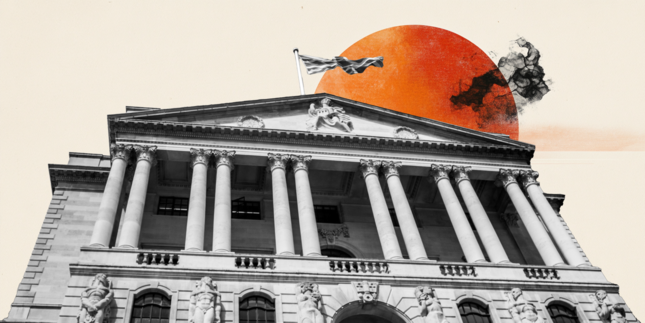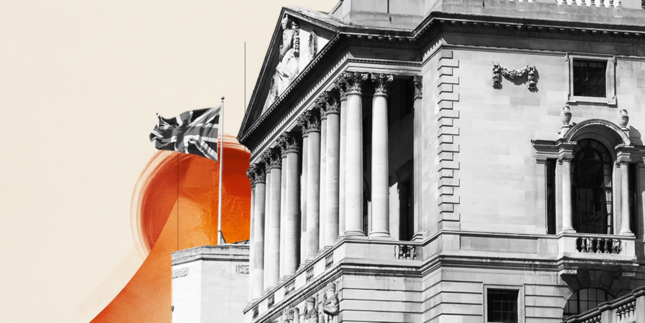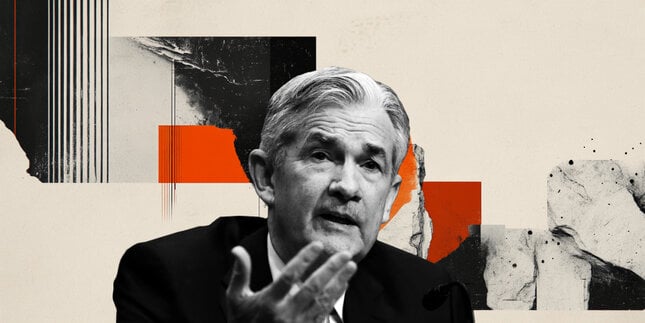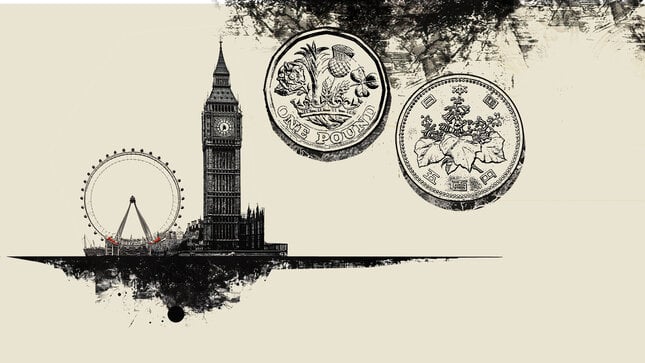Breaking: The Bank of England reduced its policy rate to 4.25%
The Bank of England trimmed its benchmark interest rate by 25 basis points to 4.25% at its May meeting, in line with market expectations.
This section below was published as a preview of the Bank of England's (BoE) interest rate decision at 06:00 GMT.
- The Bank of England is expected to lower its policy rate to 4.25%.
- UK inflation figures remain well above the BoE’s goal.
- GBP/USD receded from recent peaks, hovering around the 1.3300 zone.
The Bank of England (BoE) will announce its latest monetary policy decision on Thursday in what marks its third rate-setting meeting of 2025.
Markets widely expect the central bank to reduce its benchmark interest rate by 25 basis points to 4.25% after staying on the sidelines at its March 20 gathering.
The Monetary Policy Committee’s (MPC) decision will be accompanied by meeting Minutes and the Monetary Policy Report (MPR), offering a window into the internal debate, while Governor Andrew Bailey will address reporters in a post-decision press conference. His remarks will be scrutinised for any shift in tone, particularly around inflation risks, the potential of tariffs, and the likely timing of future rate reductions.
With the rate move largely priced in, the focus now shifts to the Bank’s forward guidance and its updated economic outlook — key signals that could shape expectations for the next few months.
UK economic outlook: Sticky inflation, tariffs, subdued growth
The Bank of England held interest rates steady in March, as widely expected, with eight members of the Monetary Policy Committee voting to maintain the benchmark rate. Swati Dhingra was the lone dissenter, backing a 25-basis-point cut in a nod to building disinflationary pressure.
The decision came alongside fresh inflation data that surprised to the downside. Figures from the Office for National Statistics (ONS) showed annual headline CPI eased to 2.6% in March, down from 2.8% the previous month. Core inflation, which strips out volatile food and energy prices, also declined, falling to 3.4% — a further signal that underlying price pressure is gradually retreating.
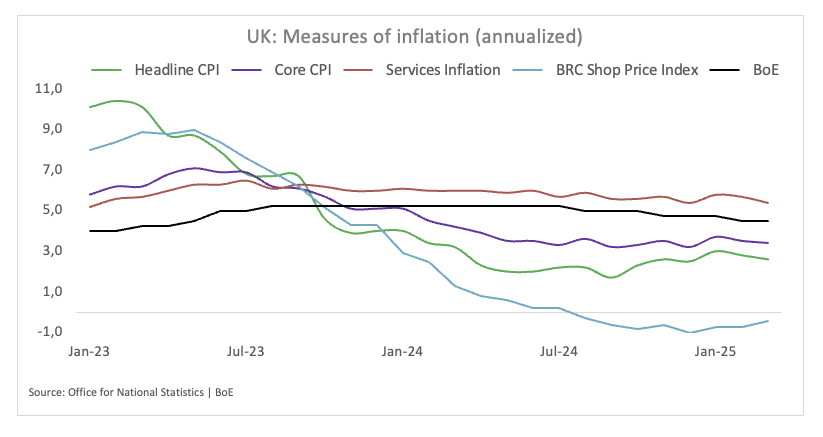
Markets responded by firming up their bets on rate cuts. Interest rate futures now fully price in 100 basis points of easing by year-end, equivalent to four quarter-point reductions, up slightly from 94 basis points last week.
BoE officials have increasingly pointed to external risks as a factor in their outlook. Some policymakers noted that recent tariffs announced by US President Donald Trump could ultimately have a disinflationary effect on the UK. Governor Andrew Bailey, speaking during the International Monetary Fund’s spring meetings, warned that rising trade tensions could weigh on global growth.
The IMF echoed those concerns as it cut its 2025 growth forecast for the UK to 1.1%, down from 1.6%, reinforcing the case for a more dovish stance from the central bank in the months ahead.
That said, traders will be watching Bailey’s press conference for any signals on whether the BoE is preparing to accelerate its rate-cutting cycle in the face of softening inflation and global uncertainty.
How will the BoE interest rate decision impact GBP/USD?
Investors are bracing for the BOE to lower its benchmark rate to 4.25% on Thursday at 11:02 GMT. The interest rate decision will be slightly delayed in light of the national two minutes of silence to commemorate the 80th anniversary of Victory in Europe Day.
While the decision itself is largely priced in, attention will centre on the vote split within the MPC and remarks from Governor Andrew Bailey for clues on the policy path ahead.
With expectations firmly set, the British Pound may show a muted reaction to the rate announcement but could shift direction depending on how dovish the tone proves to be.
In the lead-up to the meeting, GBP/USD appears embarked on a consolidative phase around the 1.3300 region, driven more by US Dollar (USD) dynamics and shifting sentiment around US trade policy than domestic catalysts.
“Cable came under renewed downside pressure after hitting more than three-year tops around 1.3440 on April 28, though it seems to have met some decent contention near 1.3260 so far,” said Pablo Piovano, Senior Analyst at FXStreet. He added that a clear break above the 2025 high could pave the way for a move toward the 2022 peak at 1.3748 reached on January 13.
On the downside, Piovano pointed to the 200-day Simple Moving Average (SMA) at 1.2849 as key support, followed by the provisional 100-day SMA at 1.2744, which precedes the April floor of 1.2707 (April 7). “If selling pressure builds, deeper support lies at the weekly troughs of 1.2558 (February 28) and 1.2332 (February 11),” he noted.
(This story was corrected on May 8 at 06:38 GMT to say that the decision will be announced at 11:02 GMT, not 11:00 GMT, due to a last-minute change in the timing from the BoE.)
Interest rates FAQs
Interest rates are charged by financial institutions on loans to borrowers and are paid as interest to savers and depositors. They are influenced by base lending rates, which are set by central banks in response to changes in the economy. Central banks normally have a mandate to ensure price stability, which in most cases means targeting a core inflation rate of around 2%. If inflation falls below target the central bank may cut base lending rates, with a view to stimulating lending and boosting the economy. If inflation rises substantially above 2% it normally results in the central bank raising base lending rates in an attempt to lower inflation.
Higher interest rates generally help strengthen a country’s currency as they make it a more attractive place for global investors to park their money.
Higher interest rates overall weigh on the price of Gold because they increase the opportunity cost of holding Gold instead of investing in an interest-bearing asset or placing cash in the bank. If interest rates are high that usually pushes up the price of the US Dollar (USD), and since Gold is priced in Dollars, this has the effect of lowering the price of Gold.
The Fed funds rate is the overnight rate at which US banks lend to each other. It is the oft-quoted headline rate set by the Federal Reserve at its FOMC meetings. It is set as a range, for example 4.75%-5.00%, though the upper limit (in that case 5.00%) is the quoted figure. Market expectations for future Fed funds rate are tracked by the CME FedWatch tool, which shapes how many financial markets behave in anticipation of future Federal Reserve monetary policy decisions.
Economic Indicator
BoE Minutes
The minutes of the Bank of England (BoE) Monetary Policy Committee (MPC) meetings are published alongside the committee decision. The minutes give a full account of the policy discussion, including differences of view among members. They also record the votes of each member of the MPC. Generally speaking, if the BoE is hawkish about the inflationary outlook for the economy, then the markets see a higher possibility of a rate increase, and that is positive for the GBP.
Read more.Last release: Thu Mar 20, 2025 12:00
Frequency: Irregular
Actual: -
Consensus: -
Previous: -
Source: Bank of England
Forex News
Keep up with the financial markets, know what's happening and what is affecting the markets with our latest market updates. Analyze market movers, trends and build your trading strategies accordingly.









